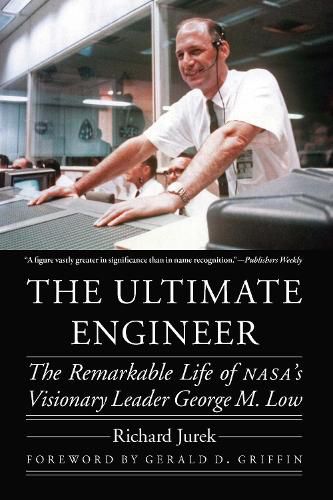Readings Newsletter
Become a Readings Member to make your shopping experience even easier.
Sign in or sign up for free!
You’re not far away from qualifying for FREE standard shipping within Australia
You’ve qualified for FREE standard shipping within Australia
The cart is loading…






From the late 1950s to 1976, the U.S. human spaceflight program advanced as it did largely due to the extraordinary efforts of Austrian immigrant George M. Low. Described as the ultimate engineer during his career at NASA, Low was a visionary architect and leader from the agency’s inception in 1958 to his retirement in 1976. As chief of manned spaceflight at NASA, Low was instrumental in the Mercury, Gemini, and Apollo programs.
At the end of his NASA career, Low was one of the leading figures in the development of the Space Shuttle in the early 1970s, and he was instrumental in NASA’s transition into a post-Apollo world. Chronicling Low’s escape from Nazi-occupied Austria to his helping land a man on the moon, The Ultimate Engineer sheds new light on one of the most fascinating and complex personalities of the golden age of U.S. human space travel.
$9.00 standard shipping within Australia
FREE standard shipping within Australia for orders over $100.00
Express & International shipping calculated at checkout
From the late 1950s to 1976, the U.S. human spaceflight program advanced as it did largely due to the extraordinary efforts of Austrian immigrant George M. Low. Described as the ultimate engineer during his career at NASA, Low was a visionary architect and leader from the agency’s inception in 1958 to his retirement in 1976. As chief of manned spaceflight at NASA, Low was instrumental in the Mercury, Gemini, and Apollo programs.
At the end of his NASA career, Low was one of the leading figures in the development of the Space Shuttle in the early 1970s, and he was instrumental in NASA’s transition into a post-Apollo world. Chronicling Low’s escape from Nazi-occupied Austria to his helping land a man on the moon, The Ultimate Engineer sheds new light on one of the most fascinating and complex personalities of the golden age of U.S. human space travel.